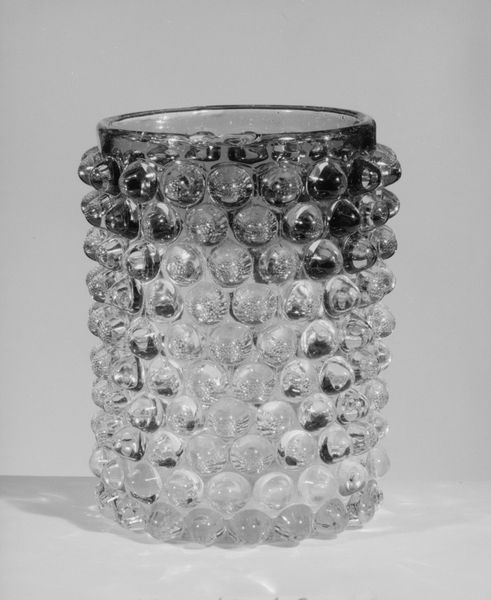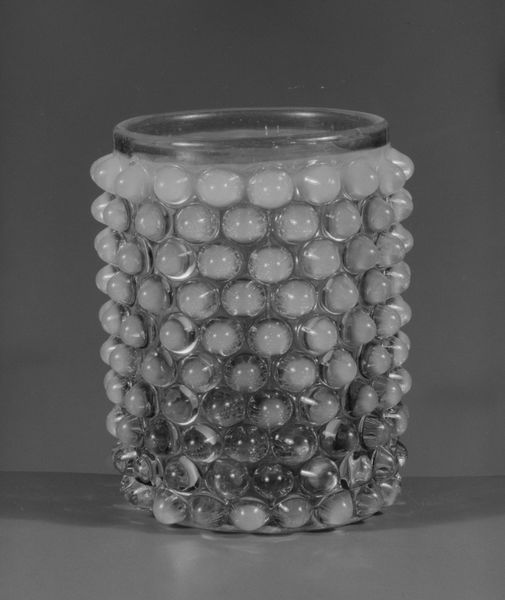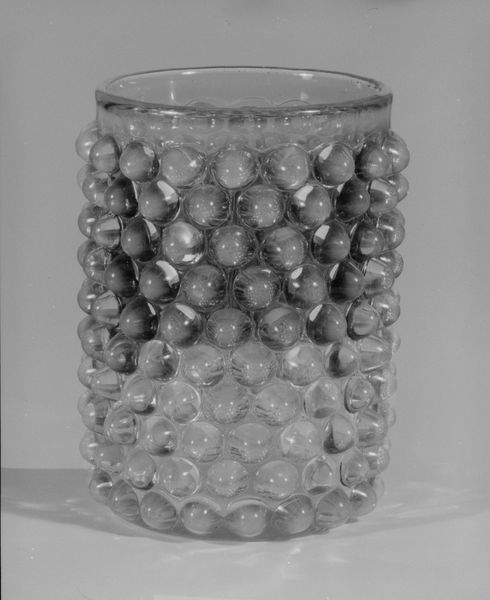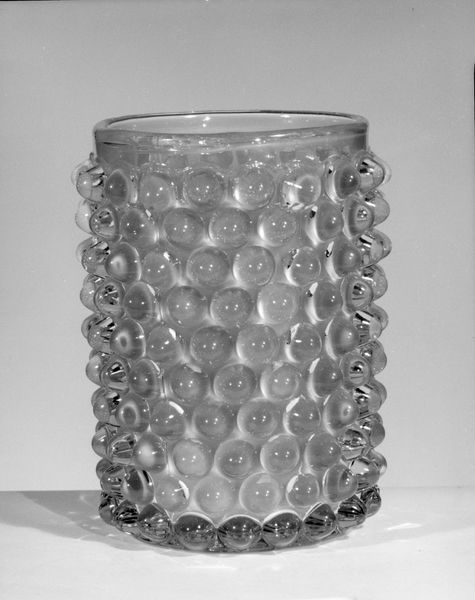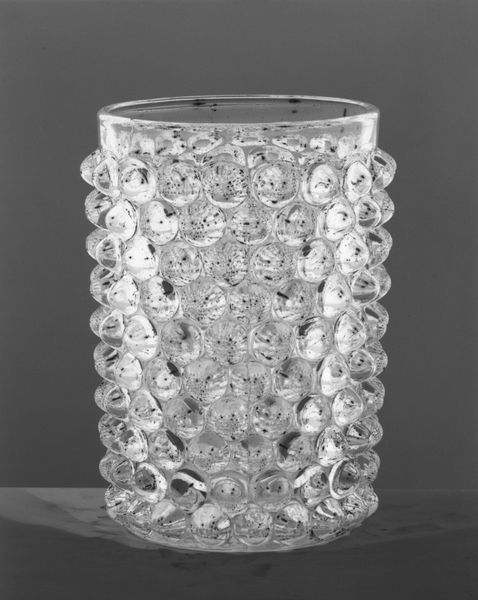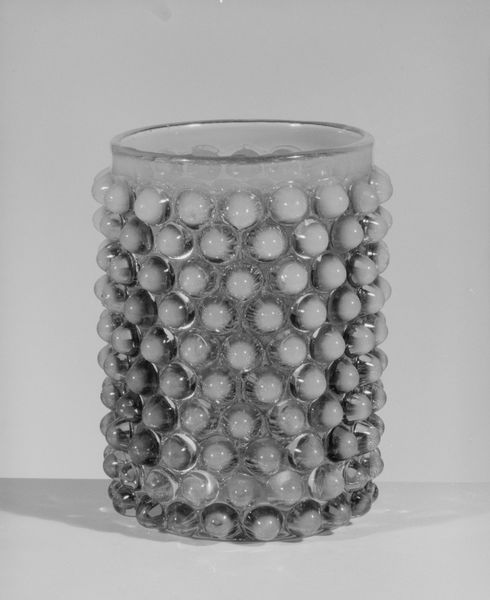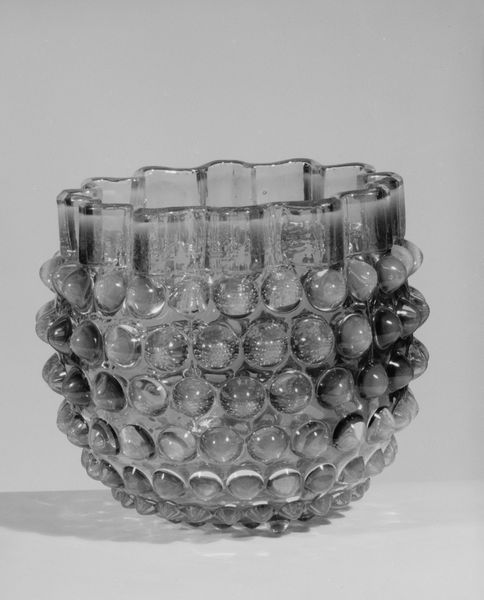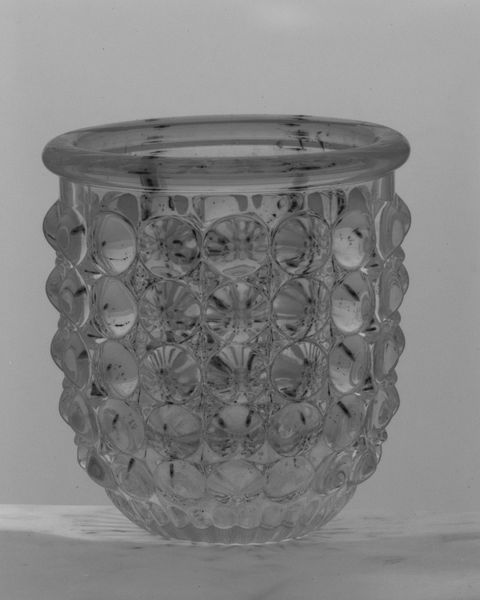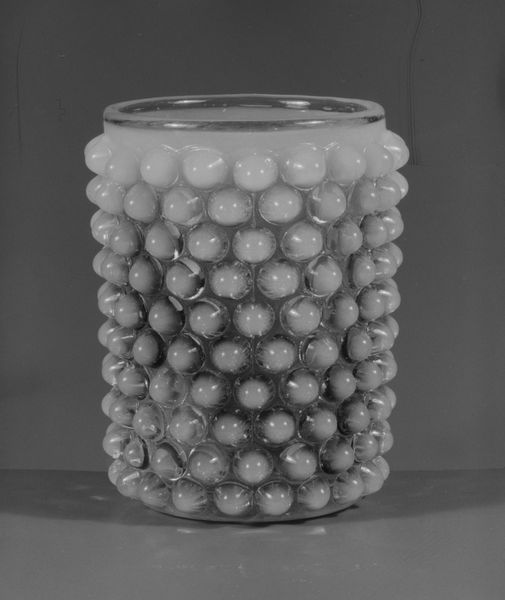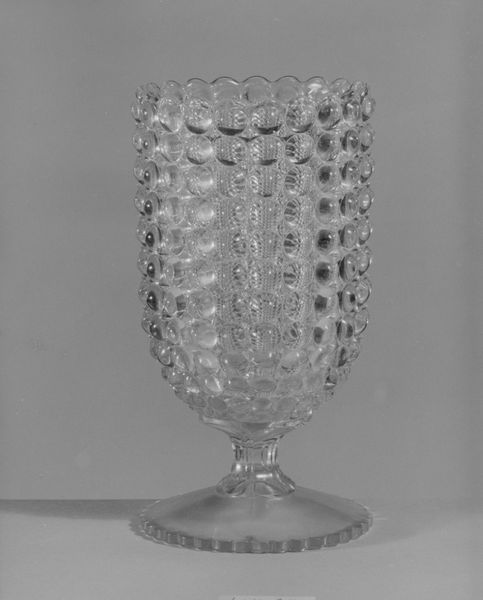
glass, sculpture
#
glass
#
sculpture
#
united-states
#
decorative-art
#
erotic-art
Dimensions: H. 4 3/4 in. (12.1 cm)
Copyright: Public Domain
Editor: Here we have a glass tumbler, made between 1887 and 1896 by Hobbs, Brockunier and Company, residing at the Metropolitan Museum of Art. It’s…bumpy, almost tactile. How do you interpret the significance of these repeating orbs? Curator: Ah, an excellent question. Consider how the image ripples and refracts through each sphere. Each is a tiny window, distorting the light and whatever liquid the glass might hold, playing with perception. What memories might be embedded in this glass, reflective of its time? Editor: I hadn't thought about memory... The repetition does feel almost ritualistic, like beads on a… well, on a glass. What about its cultural context? Curator: Precisely! Think of Victorian parlors, lit by gaslight, these glass objects capturing and scattering the glow. Glassblowing itself, an ancient practice, refined in this era. And note, the erotic art tag... These bubbles evoke fecundity, fullness. A celebration of material abundance and perhaps, subtly, human form. How might the Victorians have interpreted this in their own subtle ways? Editor: So, it's not just a glass, it’s a vessel for cultural and personal meanings. Almost like a coded message within a common household object? Curator: Precisely. The everyday imbued with layers of symbolic weight. What will this tumbler signify to future viewers? The conversation continues through time... Editor: That’s given me so much to think about regarding symbolism. Thanks for broadening my perspective. Curator: Indeed. Art objects are never silent; we simply need to listen to what they tell us.
Comments
No comments
Be the first to comment and join the conversation on the ultimate creative platform.
